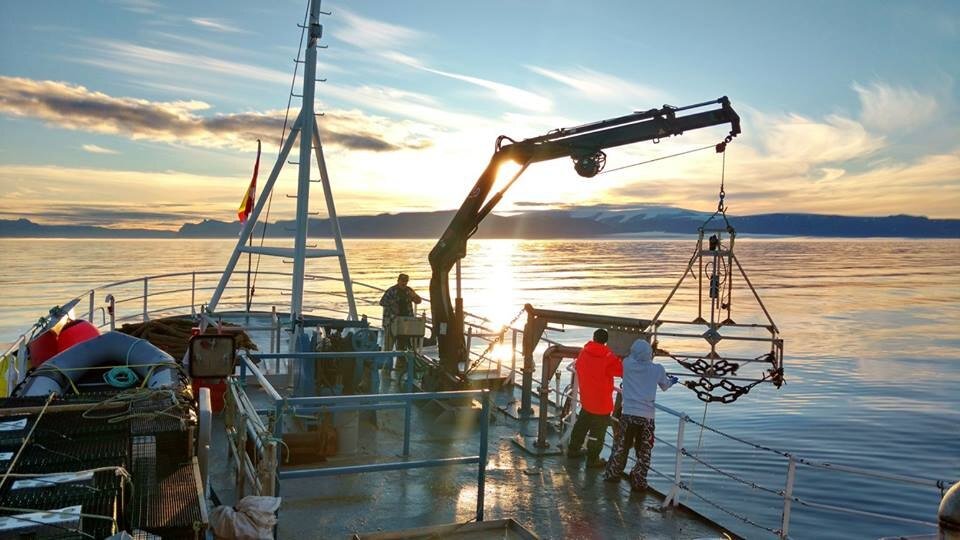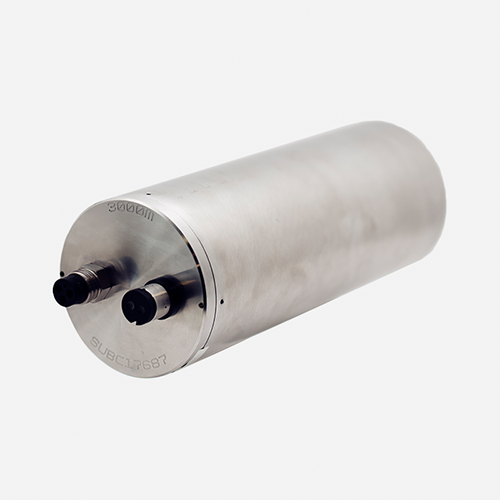How Autonomous & Programmable Subsea Cameras Are Enabling New Discoveries in Oceanography
With the advent of autonomous subsea camera systems (sometimes referred to as programmable or battery-powered systems), we are witnessing a transformative era in oceanographic research. These cutting-edge devices are revolutionizing our understanding of underwater ecosystems by enabling long-term monitoring and data collection without continuous human intervention. In this article, we will delve into the remarkable capabilities of autonomous subsea camera systems and how they are reshaping the field of oceanography.
Unveiling Oceanic Secrets
As autonomous subsea camera systems revolutionize the field of oceanography, they hold the key to unlocking countless oceanic secrets. These cutting-edge devices enable long-term monitoring, targeted observations, and data collection in remote or inaccessible underwater locations. Researchers can uncover the behavior of marine life, unravel the mysteries of ecological processes, and shed light on the impacts of environmental changes on fragile marine ecosystems. By empowering scientists with unprecedented access and insight, autonomous subsea camera systems are paving the way for discoveries and transformative insights in oceanography.
Unleashing Independence
Autonomous subsea camera systems are breaking free from the constraints of human control, operating independently in the watery depths. Equipped with onboard processors, software, and power sources, these innovative systems carry out their tasks autonomously, making them invaluable assets for prolonged data collection and monitoring efforts. Gone are the limitations of human presence, as these devices venture into uncharted territories to capture valuable insights.
Programmable Precision
The versatility of autonomous camera systems goes beyond their imaging capabilities. One key feature that sets autonomous subsea camera systems apart is their programmable functionality. These innovative devices allow researchers to tailor the behaviour of the cameras to match their specific objectives with precision and flexibility. Scientists can capture data that aligns perfectly with their research goals through adjustable capture frequency, exposure settings, and more. This programmability empowers researchers to optimize their data collection strategies and extract the most relevant insights from their underwater explorations.
These devices offer a wide range of programmable settings and scripting options that open up a world of creative possibilities. With scripting, researchers can customize the camera's behaviour to suit their specific needs and capture captivating time-lapse videos and stills. Whether it involves a simple script to take an image every 30 seconds or a more intricate sequence that incorporates alternating deep-red and white strobes followed by a 10-minute video recording, the potential is limitless. These built-in automation settings prove particularly valuable when collecting footage using autonomous underwater vehicles (AUVs), observatory setups, and other battery-powered systems. By embracing the power of scripting, researchers can unlock a new realm of exploration and maximize the potential of their underwater expeditions.
Learn more with our “Scripting in the Subsea” webinar. Watch Now!
Power to Persist
Autonomous subsea camera systems are equipped with efficient power management mechanisms that ensure their extended operation in challenging underwater environments. With batteries, solar panels, or even energy harvesting techniques, these systems have the power to sustain long-term deployments. This means scientists can now embark on ambitious studies that span weeks, months, or even years, uncovering a wealth of information previously inaccessible due to limited power resources.
The battery you choose will depend on your application and deployment length. For example, one of SubC Imaging’s options, Battery 259, is a high-capacity Lithium-Ion battery module specifically designed for stand-alone operations in autonomous subsea camera systems. It has a UN38.3 certification, meaning it meets the safety requirements for transportation via cargo plane. It also features the inclusion of overcharge, over-discharge, over-drain, and short-circuit protection. These protections help prevent potential issues such as excessive charging or discharging, which can cause damage to the battery or pose safety risks. By incorporating these protective measures, Battery 259 ensures the safe and reliable operation of autonomous subsea camera systems during extended deployments.
Extended Deployments with Hibernation Hardware
Some systems go beyond battery features to expand autonomous capabilities. SubC’s optional Hibernation hardware enables the capture of time-lapse footage, revealing previously unseen underwater movements and slow processes that occur over extended periods. Designed to maximize battery power, the camera system runs through a series of commands before entering a hibernation state, conserving energy while preserving the data it has collected.
During the hibernation period, all images and videos captured by the camera are stored in its internal memory. This innovative feature allows researchers to study long-term changes, such as the growth of coral reefs, the migration patterns of marine species, or the gradual transformation of underwater geological formations. By unlocking the ability to document the passage of time beneath the waves, scientists gain valuable insights into the dynamic nature of the ocean and its inhabitants.
When the autonomous subsea camera system is programmed to exit the hibernation state, it resumes data collection, capturing images and videos with precision and accuracy. This seamless transition between active and hibernation modes maximizes the system's operational duration, ensuring a continuous record of the underwater environment and enabling researchers to detect subtle shifts and patterns that occur over months or even years.
Data Storage and Transmission
The storage and transmission capabilities of autonomous subsea camera systems play a pivotal role in the advancement of oceanographic research. These systems are designed to capture and store high-resolution images and videos, offering a glimpse into the hidden world beneath the waves. Depending on their configuration, the recorded data can be stored onboard or transmitted in real-time to the surface or remote locations using wired or wireless communication methods. This real-time data transmission allows researchers to monitor changes as they happen, opening up avenues for quick response and adaptive studies.
Sensing the Environment
Autonomous subsea camera systems are not just observers; they can be equipped with environmental sensors that provide crucial contextual data. Depth sensors, temperature sensors, salinity sensors, and water quality sensors work in tandem with the cameras, enriching the captured visual data. This integrated approach enables researchers to study the interplay between environmental factors and the behavior of marine organisms, contributing to a more comprehensive understanding of underwater ecosystems.
Beyond Boundaries
The versatility of autonomous subsea camera systems extends to their deployment methods. Whether anchored to moorings, attached to buoys, deployed via autonomous underwater vehicles (AUVs), or lowered with drop frames, these systems can adapt to diverse underwater environments. Their compact size and robust construction allow them to withstand the demanding conditions of the deep, including high pressures, corrosive seawater, and chilling temperatures. By transcending traditional limitations, these devices reach the farthest corners of the underwater realm, capturing data that was once beyond our grasp.
AUVs: A New Lens on Underwater Environments:
AUVs are unmanned underwater vehicles that operate independently, navigating through the ocean with precision. Equipped with advanced sensors, navigational systems, and communication capabilities, AUVs offer an ideal platform for deploying autonomous subsea camera systems. These AUV-mounted cameras can explore vast underwater territories, conduct surveys, and collect data in a systematic and efficient manner. By integrating subsea cameras with AUVs, researchers gain access to remote and challenging underwater environments, uncovering hidden ecosystems and elusive marine species.
Photo Credit: U.S. Navy, John F. Williams
Drop Systems: A Window into the Abyss
Photo Credit: Phil Walsh, Marine Institute
One of the deployment methods for autonomous subsea camera systems is through drop systems. These systems consist of frames or platforms that can be lowered into the ocean depths, carrying the camera systems with them. This method allows researchers to position the cameras in specific areas of interest, capturing high-resolution images and videos as they descend into the abyss. Drop systems provide a unique opportunity to study vertical profiles of the underwater environment, from the surface down to the deep-sea floor.
Baited Landers: Attracting Marine Life
Baited landers are another deployment method that researchers employ to attract and study marine life. These systems are equipped with bait containers or lure mechanisms that entice underwater organisms to gather around the camera systems. By strategically placing baited landers in targeted areas, scientists can observe and document the behavior, interactions, and diversity of marine species. Baited landers offer a glimpse into the intricate relationships between different organisms and provide valuable insights into the functioning of underwater ecosystems.
Unbaited Landers: Capturing Natural Environments
In contrast to baited landers, unbaited landers focus on capturing the natural environment without any artificial attractants. These systems are deployed in selected locations to observe and document the undisturbed underwater ecosystems. By capturing imagery and videos of marine life in their natural habitats, researchers gain a deeper understanding of the ecological dynamics, species distributions, and natural processes occurring in these environments. Unbaited landers allow for unbiased observations, providing a holistic perspective of the underwater world.
Conclusion
The advent of autonomous subsea camera systems has ushered in a new era of exploration and understanding in oceanography. These advanced devices have the power to operate independently, offering unprecedented opportunities for long-term monitoring and data collection in underwater environments. With their programmable functionality, efficient power management, data storage, and transmission capabilities, and environmental sensing capabilities, these systems are pushing the boundaries of what we can uncover about the underwater world.
As researchers harness the potential of autonomous subsea camera systems, we can expect a wave of groundbreaking discoveries. From deep-sea ecosystems to delicate marine organisms, these devices are enabling us to observe and study the hidden intricacies of the ocean with greater precision and accuracy than ever before. By shedding light on the complex interactions and processes at play, autonomous subsea camera systems are driving scientific progress and paving the way for informed conservation efforts.









